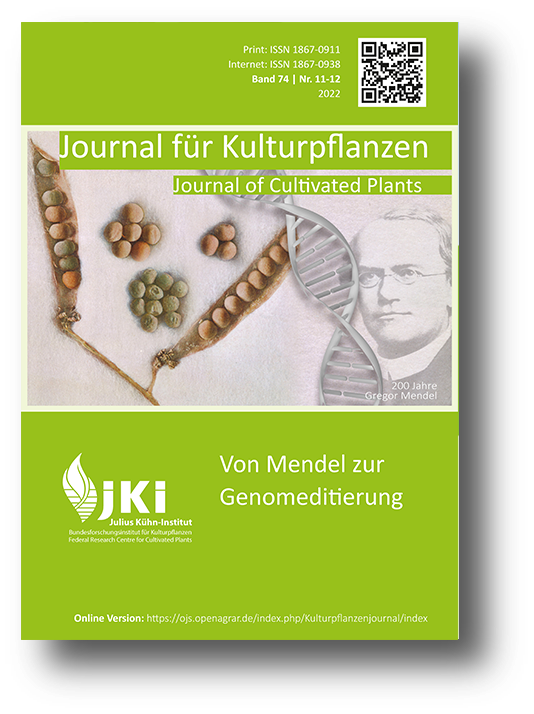Identification of seedling resistance against leaf rust using innovative phenotyping methods
DOI:
https://doi.org/10.5073/JfK.2022.11-12.07Keywords:
Leaf rust resistance, wheat cultivars, QTL mapping, seedling resistance, markersAbstract
Puccinia triticina, as the causal agent of leaf rust, is one of the most important fungal diseases of wheat. Effective resistance can prevent yield losses and reduced quality. More than 80 leaf rust resistance (Lr genes) genes are known, most of which are vertical resistance genes vulnerable to breakdown by virulent races of leaf rust. Therefore, breeding activities are focused on quantitative resistance genes, e.g., Lr34 and Lr46. In an F2 population derived from the partially resistant cultivar Pavon F76, carrying Lr46 at the adult plant stage, and the susceptible spring wheat variety Thatcher, seedling resistance QTLs could be detected, independent of the expected chromosomal regions for already known Lr genes. Using innovative phenotyping methods, e.g., microscopic evaluation and counting of uredospore pustules, three QTLs were detected on chromosomes 2B, 4D and 7D. These resistance QTLs explained more than 11% of the phenotypic variance. KASP markers can be derived from markers within the QTL peaks and are available for marker-assisted selection. The study proves again that Mendelian rules do not only describe the inheritance of phenotype. They also apply to the inheritance of the marker alleles and are therefore essential for marker selection and marker-assisted breeding.
Downloads
Published
Issue
Section
License
Copyright (c) 2022 Aleksandra Varekhina, Victor Guerra, Andreas Stahl, Albrecht Serfling

This work is licensed under a Creative Commons Attribution 4.0 International License.
The content of the journal is licensed under the Creative Commons Attribution 4.0 License. Any user is free to share and adapt (remix, transform, build upon) the content as long as the original publication is attributed (authors, title, year, journal, issue, pages).
The copyright of the published work remains with the authors. The authors grant the Journal of Cultivated Plants, the Julius Kühn-Institut and the OpenAgrar repository the non-exclusive right to distribute and exploit the work.







